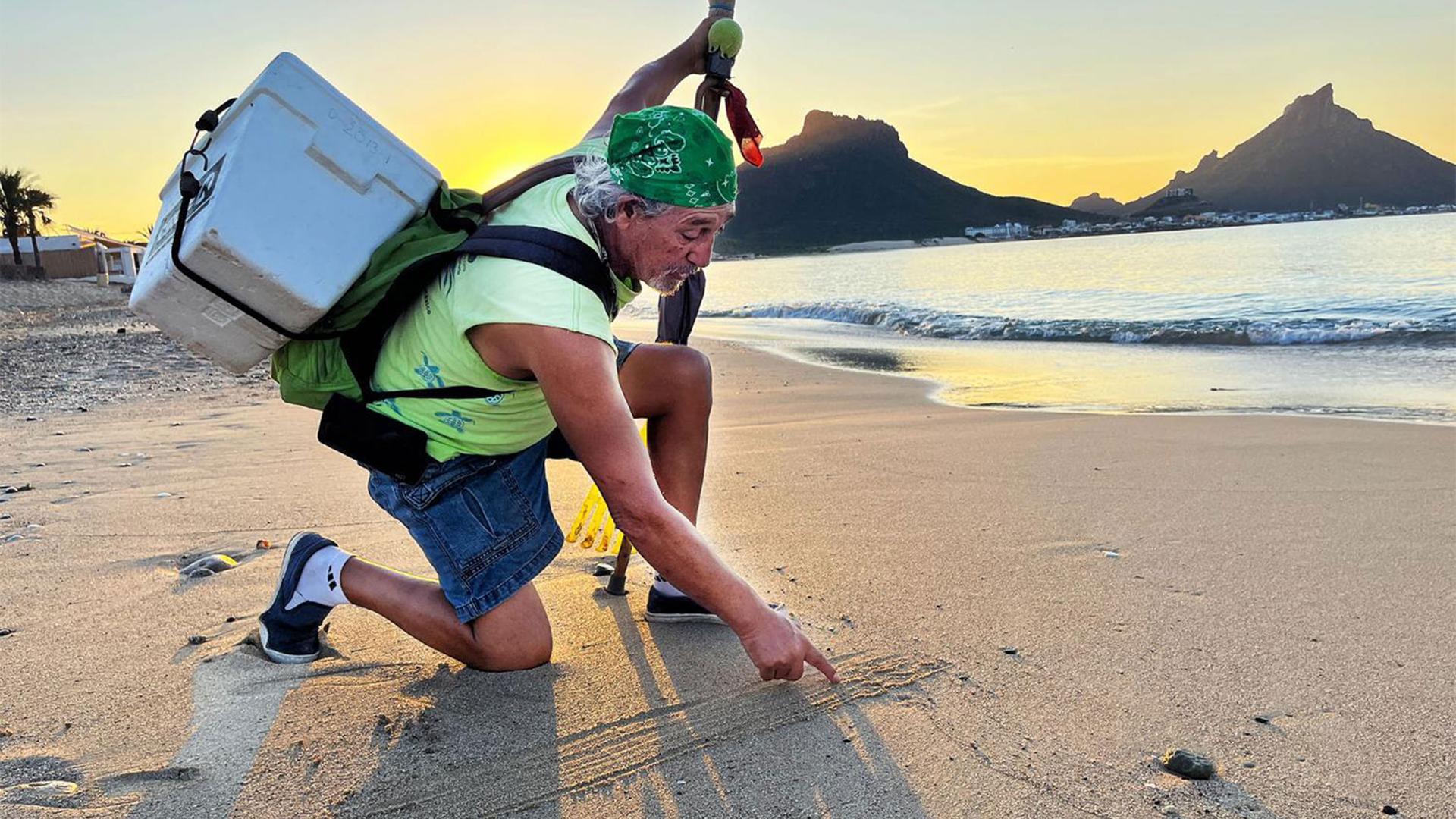It was 5:30 on a Sunday morning and Antonio Lopez was up before the sun, walking along Algodones beach in San Carlos Nuevo Guaymas, in Mexico.
“I still get excited when I find a nest or if I see tracks, you know,” the 65-year-old said as he walked through the damp sand, with his walking stick squeaking every few steps.
The tracks he mentioned were left by Olive Ridley sea turtles making their slow way onto San Carlos beaches during nesting season.
“When you see the tracks it’s hard to miss. It kind of looks like a cooler, somebody dragging a cooler. It’s flat and it has little indentations on each side of the track,” Lopez said.
Those indentations are from the turtle’s flippers pulling it through the sand.
Lopez, who moved to San Carlos four years ago from Colorado, walks two miles along the stretch of beach every morning from June through December in search of those markings.
He gets there early — in time to see the sun glow orange as it rises over the iconic Tetakawi peaks, and to reach any nests before other beachgoers arrive, potentially putting the ping-pong-ball-sized eggs in harm’s way.
“I carry my backpack with everything that I need,” the long-time volunteer said.
Known as a first responder, he has years of experience and training on how to find and register nests and make sure the eggs are protected, and he has his system down.
A metal rod fastened to his walking stick helps him gently test for loose sand where the turtle laid eggs. A small plastic rake allows him to cover the turtle’s tracks once the eggs are located. And a white Styrofoam cooler strapped to his back can be carefully packed with eggs if the nest needs moving.
Lopez is part of a volunteer group working to help as many eggs as possible to hatch. And then, his favorite part:
“The first release I saw, watching all the little turtles scuttling out to sea, that hooked me hard.”
“Releasing the turtles,” he said with a chuckle. “The first release I saw, watching all the little turtles scuttling out to sea, that hooked me hard.”
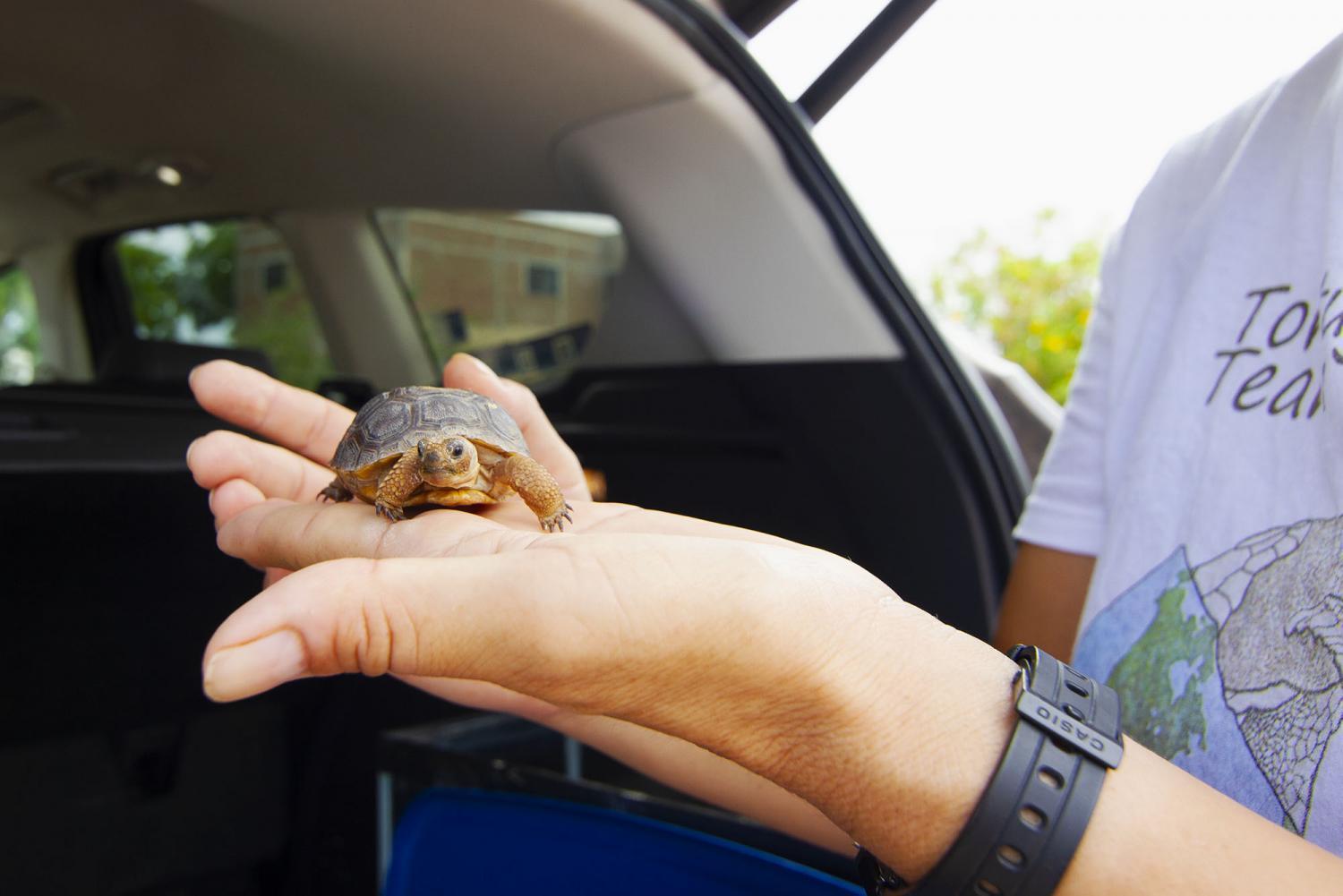
All creatures of desert and sea
In San Carlos, the efforts to protect sea turtles is led by a wildlife rescue known as CRRIFS.
“It’s called the Centro de Rescate, Rehabilitación e Investigación de Fauna Silvestre [Wild Fauna Rescue, Rehabilitation and Research Center], or CRRIFS,” said veterinarian Elsa Coria Galindo, the co-founder and director.
“We take care of all kinds of wildlife,” she said. “Both land and marine animals.”
In the office, there were a pair of baby squirrels; a palm-sized desert tortoise; an orphaned opossum joey scratching at its box, demanding milk.
Outside, a pelican with an injured foot shuffled around a shaded pen, and nearby, a sickly sea turtle floated in a shallow pool.
“It’s sad,” Coria said as she refilled the turtle’s pool with fresh, cool water. “It’s a really sad case.”
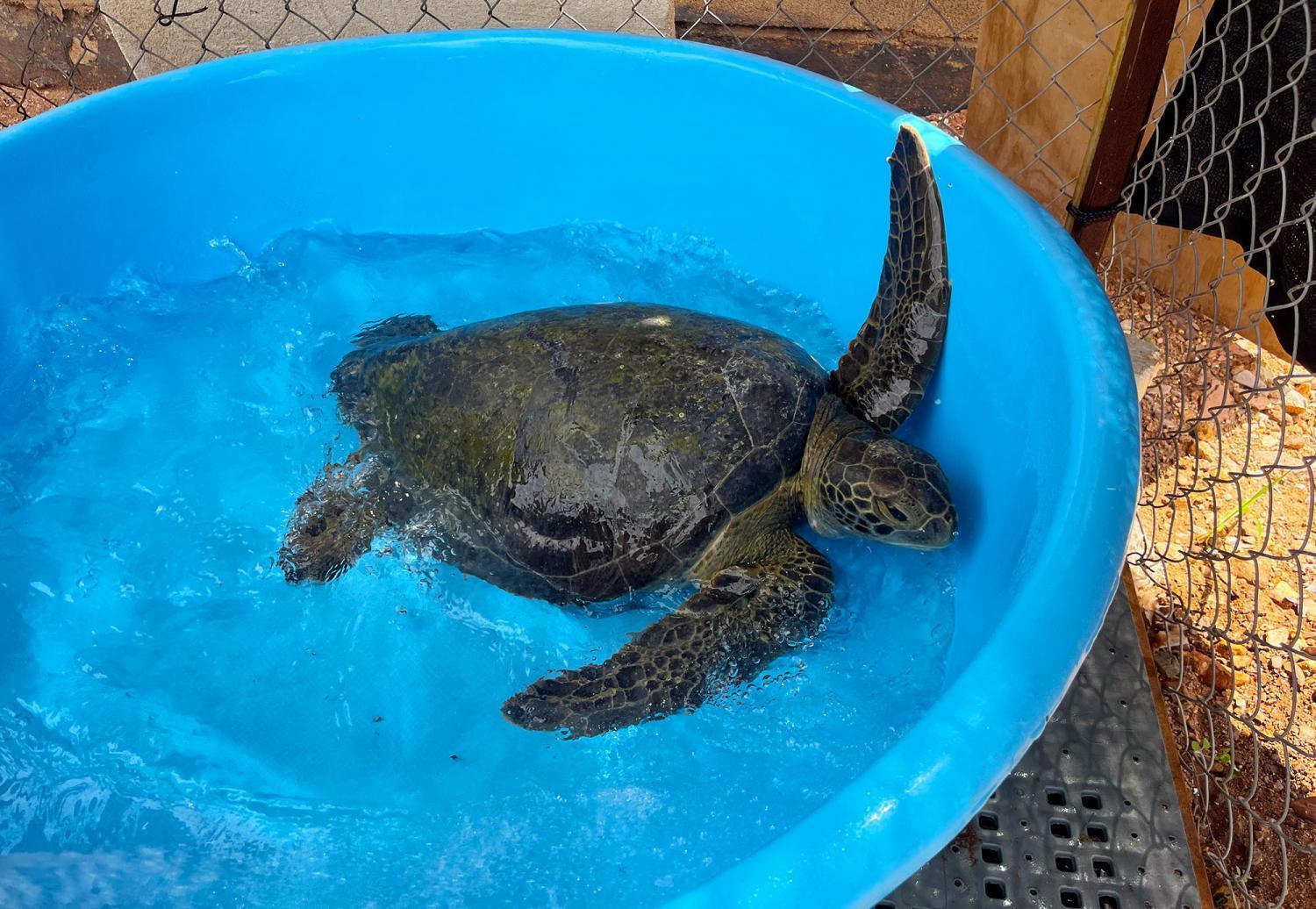
There’s not much they could do for the young, green sea turtle but make her comfortable.
But while not every rescue can have a happy ending, Coria said, when her team is able to release animals back into the wild, “it’s priceless.”
And it’s the only compensation that Coria gets as a volunteer.
A veterinarian’s dream
Five years ago, she and her husband put their family savings into the project, a decades-long dream.
“In reality, this project has been thought about and planned for decades,” she said.
Since she moved to nearby Guaymas more than 20 years ago, Coria and her husband have often cared for injured and sick wildlife, filling what she calls a major gap.
“This is a special place, because we have contact with a great number of animals,” Coria said.
San Carlos, nestled between the desert and the sea of the Gulf of California, is rich with biodiversity. But human activities here can sometimes harm wildlife — which get caught in fishing gear, hit by cars or attacked by pets.
CRRIFS, Coria said, is the only organization in the region that attends to both land and sea animals.
“You could say that our work is really unique in this entire region of the Gulf of California,” she said.
Government agencies often seek the team’s expertise when whales or dolphins are beached; they are the sole resource for large marine mammal autopsies, and they run a program to free sea lions trapped in nets.
Still, Coria wants to do more.
“Our goal is to grow and have a quality facility to care for many more animals, and to train students and professionals to work with wildlife,” she said. “We want to be a big, robust center, with many employees. And we want to inspire others to do this work as well.”
Currently, construction is underway on a new, larger building that will be shared with a domestic animal rescue. It will have surgery and exam rooms, and classrooms and lodging for guests and visiting students. In time, new animal enclosures will be installed, and perhaps someday, a second location right on the beach.
For now, though, the highlight of their office is the small, temperature-controlled incubation room.
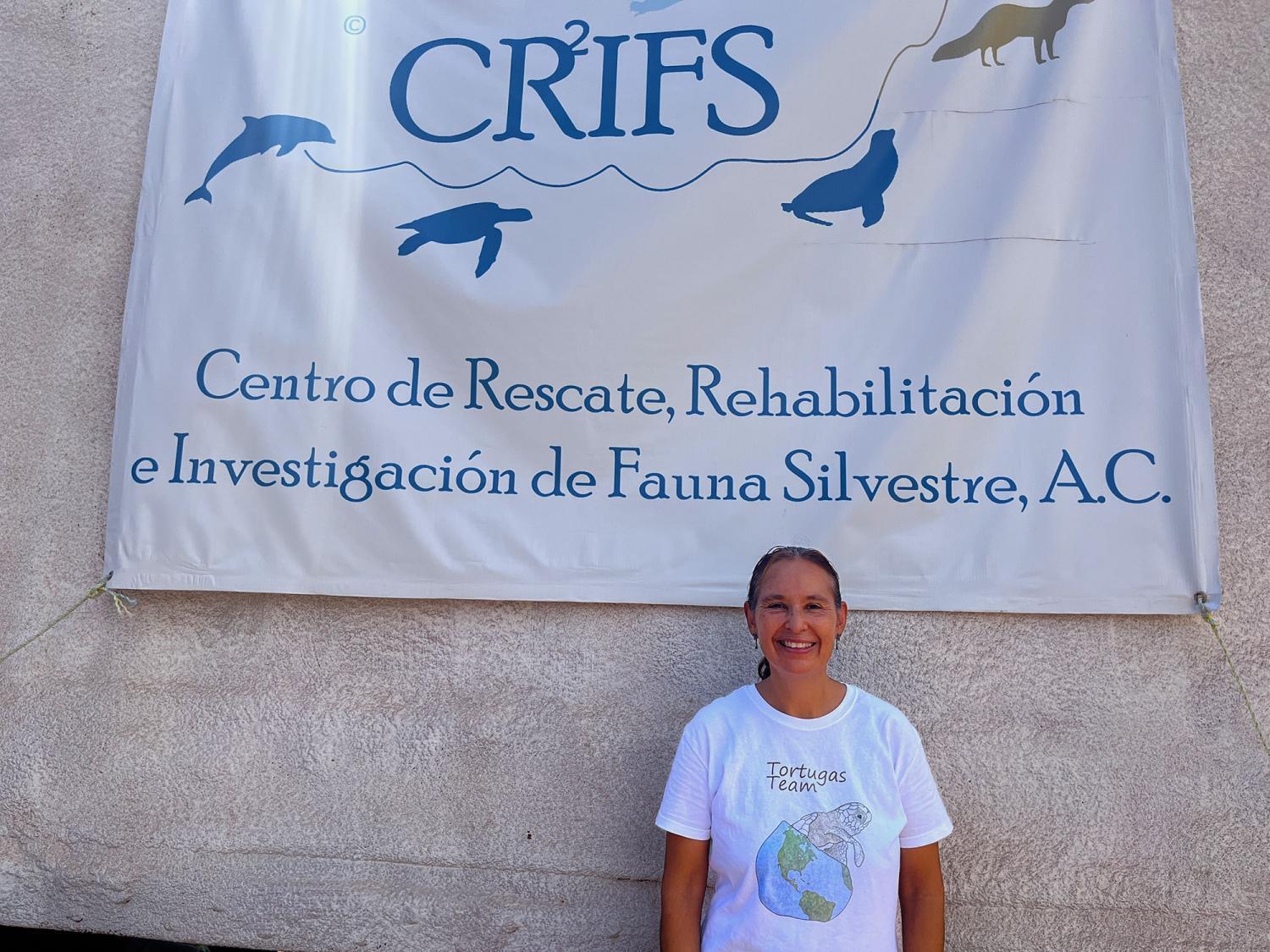
Sea turtle incubation
As the only sea turtle incubation in Sonora, its shelves are lined with Styrofoam coolers. Inside each, a nest with some 100 eggs.
“There have been nests where 100% of the eggs have hatched,” said biologist Eduardo Perez, who runs CRRIFS’ sea turtle program.
He said that overall between 90% to100% of eggs hatch in the incubation room — about 20% more than in nests on the beach, which face a lot of risks — like vehicles.
Four wheelers and trucks sometimes crush the baby turtles, he said. Or they leave ruts in the sand that can present an insurmountable barrier for tiny hatchlings trying to reach the water. In other cases, nests are accidentally cooked by nearby bonfires or dug up by dogs.
So, Perez and his crew of well-trained volunteers move the ones they can to the incubation room to increase their chances of survival.
“The volunteers are so important, because, as you can see, this is a lot of work,” he said. “And our volunteers, they do all of it out of their love for the animals, for the turtles.”
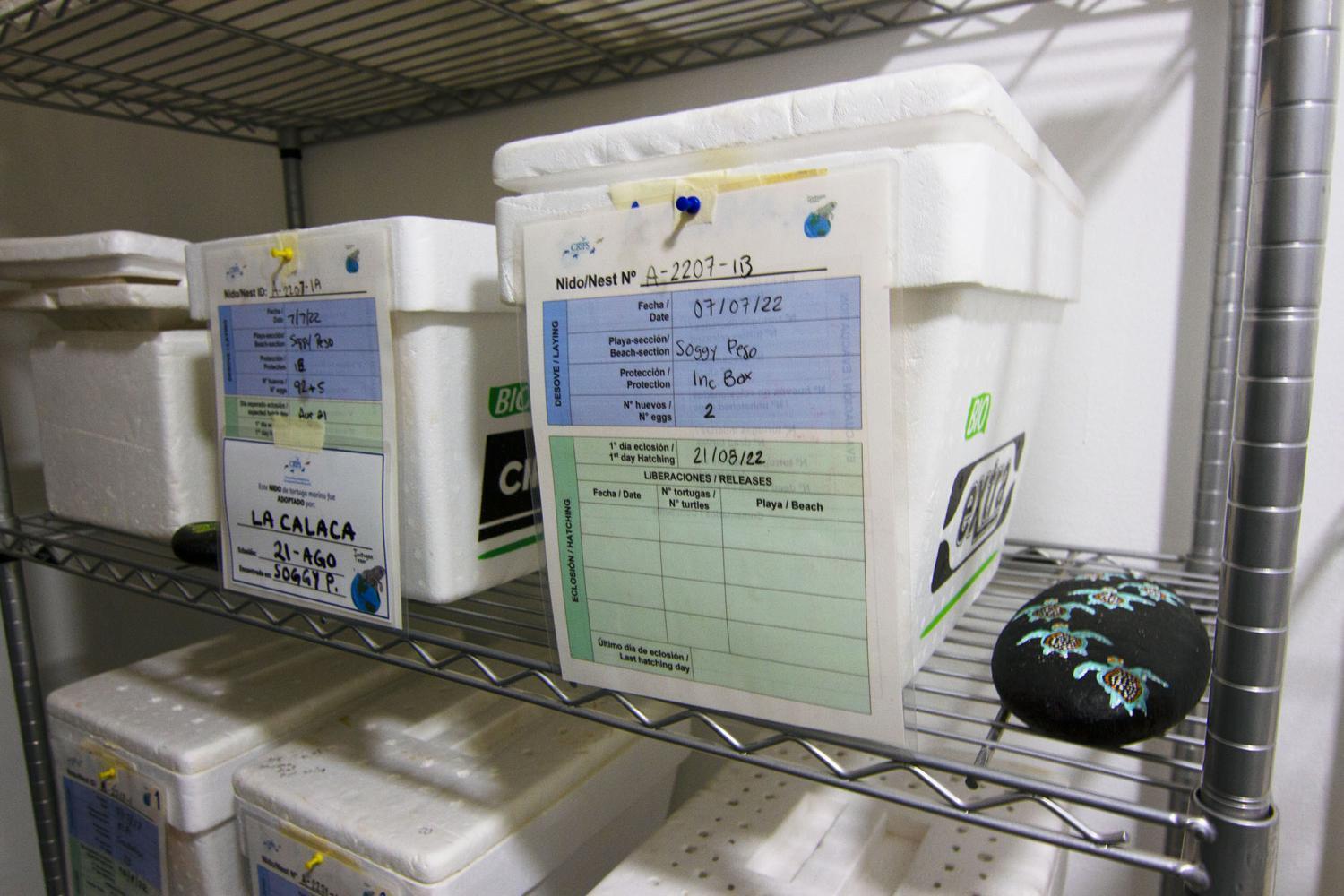
From the heart
Once hatched, baby turtles are released with the help of supporters who adopt the nests by providing a donation.
“Fortunately, there are now many people who know our work and want to help,” Coria said. “It wasn’t always that way. When we first started people thought it was crazy to try to save injured birds and turtles. Now, dozens of people join us to watch the turtles crawl out to sea.”
Coria said the releases help bring attention to the rescue’s work. Each year, more nests are adopted, volunteers signed up and wildlife in need are reported to the CRRIFS crew. In 2021, the team attended to about 63 animals, in addition to their sea turtles and sea lion projects. Last year, she said, they were on track to more than double that number.
For Coria, that’s proof that when you do something from the heart, it’s bound to succeed.
“Even when it’s hard — and it has been hard —,” she said, “you know you’ll do whatever it takes.”
This story first appeared on KJZZ.org.
Related: Kino Bay’s Becerra family gave up traditional fishing to focus on saving sea turtles
The World is an independent newsroom. We’re not funded by billionaires; instead, we rely on readers and listeners like you. As a listener, you’re a crucial part of our team and our global community. Your support is vital to running our nonprofit newsroom, and we can’t do this work without you. Will you support The World with a gift today? Donations made between now and Dec. 31 will be matched 1:1. Thanks for investing in our work!
